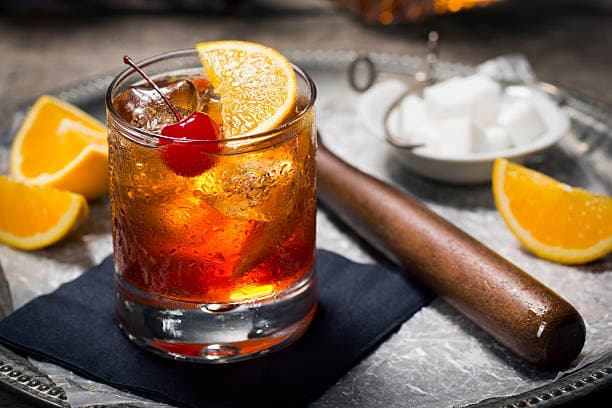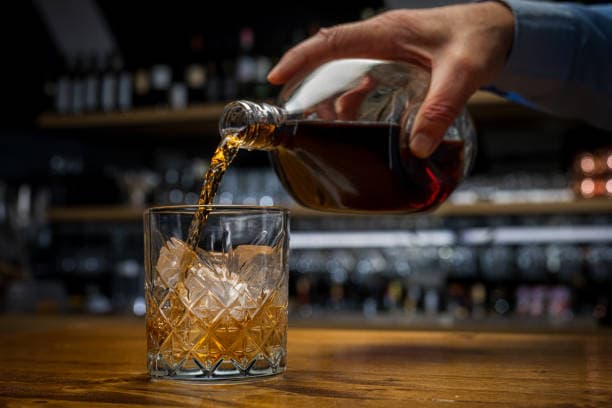Whiskey, a spirit steeped in history and diversity, has been savored across the globe for centuries. Originating from ancient distillation practices, it has evolved into a vast spectrum of flavors, each reflective of its geographical origin, ingredients, and aging processes. This rich variety makes whiskey not just a beverage, but a journey through the senses. Understanding and identifying these flavors is not merely an exercise in taste—it’s a pathway to appreciating whiskey’s deep cultural heritage and craftsmanship. The art of distinguishing whiskey flavors enhances the experience, transforming each sip into an exploration of history, science, and art. Through this sensory journey, enthusiasts and novices alike unlock a deeper connection to the world of whiskey, paving the way for a more profound enjoyment and appreciation of this timeless spirit.
The Science of Whiskey Flavors
The intricate world of whiskey offers a palette of flavors as diverse as its history. At the heart of this diversity lies the science of flavor development, a fascinating interplay between technique and time. Understanding this science is key to unlocking the full sensory experience that whiskey offers.
Understanding the Whiskey Flavor Wheel
The Whiskey Flavor Wheel is an essential tool for enthusiasts and professionals alike, designed to demystify the complex flavor profiles found in whiskey. By categorizing flavors into major groups—such as fruity, spicy, floral, and peaty—it provides a structured approach to tasting. This wheel helps drinkers articulate their experiences and preferences more precisely, enhancing their ability to recognize and appreciate the nuanced character of different whiskies.
The Role of Distillation and Aging
Distillation techniques and the aging process play pivotal roles in shaping whiskey’s final flavor profile. The choice between pot and column distillation methods affects the spirit’s purity and flavor concentration, with each method imparting distinct characteristics. Aging, on the other hand, is where whiskey truly comes into its own. The interaction between the whiskey and its oak barrel over time introduces a range of flavors—from vanilla and caramel to more complex notes like leather and tobacco, depending on the type of wood and previous barrel use. Together, distillation and aging are the alchemists of the whiskey world, transforming basic ingredients into a rich tapestry of flavors.
Sensory Exploration Techniques
Delving into whiskey’s sensory world involves more than just tasting; it’s a holistic exploration of sight, smell, and taste. Mastering these techniques allows one to fully appreciate whiskey’s complexity and craftsmanship, setting the foundation for a deeper understanding and enjoyment.
Visual Inspection and Nosing
Before whiskey touches your lips, its visual appearance and aroma offer clues to its character and quality.
Steps for observing whiskey’s color and nosing for aromas:
- Color Observation: Hold the glass up to a light. The color, ranging from pale straw to deep amber, hints at the whiskey’s age and the type of barrel used for aging.
- Nosing: Swirl the glass gently to release aromas. Nose the whiskey at different distances, allowing the full range of scents from sharp alcohol to subtle nuances to emerge. Identify the primary notes, whether they are fruity, floral, woody, or smoky.
The Tasting Process
Tasting whiskey is an art, unfolding in stages that engage and challenge the palate.
Guide on tasting, from the first sip to appreciating the finish:
- The First Sip: Take a small sip and let it linger in your mouth. Note the initial flavors that strike the palate—sweet, salty, sour, or bitter.
- Mid-Palate: As the whiskey moves across your tongue, concentrate on the evolution of flavors. Identify secondary notes like vanilla, caramel, fruit, or spice.
- The Finish: After swallowing, observe the aftertaste, or finish, that remains. A longer, more complex finish often indicates a higher quality whiskey. Reflect on the balance and harmony of flavors as they fade.
This structured approach to sensory exploration enhances one’s ability to identify and appreciate the intricate flavors and aromas whiskey presents, turning each tasting into a journey through its essence.
Enhancing Your Tasting Experience
To elevate the whiskey tasting experience to its peak, attention to the environment and tools used is crucial. This ensures that every sensory aspect of the whiskey can be appreciated fully, making each tasting a memorable journey.
Optimal Environment and Tools
The setting and tools you use for whiskey tasting significantly affect your ability to discern and enjoy its subtle flavors and aromas.
- The Impact of the Environment: A quiet, well-ventilated space free from strong odors provides the ideal environment. Distractions and competing scents can mask the delicate nuances of whiskey, so choosing a neutral setting enhances focus and sensitivity to the whiskey’s profile.
- Selection of Proper Glassware: The shape of the glass influences aroma concentration and tasting ease. Glasses like the Glencairn, designed specifically for whiskey, narrow at the top to funnel aromas efficiently, offering a richer olfactory experience.
Palate Training and Tasting Notes
Developing a refined palate and maintaining tasting notes are essential practices for any whiskey enthusiast looking to deepen their appreciation and understanding of this complex spirit.
Techniques for developing a refined palate and keeping track of tasting experiences:
- Regular Tasting: Regularly taste different whiskeys to familiarize yourself with a range of flavors. Try to identify and articulate the specific characteristics of each.
- Blind Tasting: Engage in blind tastings to challenge your palate and avoid bias based on brand or age.
- Use a Flavor Wheel: Utilize a whiskey flavor wheel during tastings to help identify and record specific flavors and aromas.
- Keep a Tasting Journal: Document your impressions of each whiskey, including the color, nose, palate, and finish. Note any food pairings that complement or enhance the whiskey’s flavors.
By fostering an optimal tasting environment and employing systematic palate training techniques, whiskey enthusiasts can significantly enhance their tasting experience, leading to a deeper, more informed appreciation of whiskey’s intricate flavors and aromas.
Advanced Whiskey Tasting Strategies
As whiskey enthusiasts delve deeper into their tasting journey, advanced strategies become crucial for a more profound appreciation of this complex spirit. Mastering nuanced techniques of palate analysis and exploring the interplay between whiskey and food can unlock new dimensions of flavor and enjoyment.
Mastering the Art of Palate Analysis
Advanced palate analysis goes beyond basic flavor identification, demanding a nuanced understanding of how different components interact. This involves recognizing the influence of aging, cask type, and distillation process on the whiskey’s profile. To dissect whiskey flavors and aromas more effectively, enthusiasts should focus on:
- Comparative Tasting: Experience whiskies side-by-side to discern subtle differences and similarities.
- Concentration on Mouthfeel: Assess the texture and body of the whiskey, noting any oiliness, creaminess, or astringency.
- Aroma Revisiting: Return to the nose after tasting to see how the aromas have developed or revealed new dimensions.
Exploring Whiskey with Food Pairings
Pairing whiskey with food enhances the tasting experience by highlighting complementary flavors or introducing contrasting ones that bring out new aspects of the whiskey’s character. Here are some common practices among connoisseurs for food and whiskey pairing:
- Cheese Pairings: Rich, aged cheeses can enhance the whiskey’s depth, while creamy cheeses might highlight its smoothness.
- Chocolate and Whiskey: Dark chocolate, with its bitter notes, can complement the complexity of a good whiskey, particularly those with rich, peaty flavors.
- Seafood Matches: Smoked salmon or other rich seafood can balance nicely with the smokiness of certain whiskies, emphasizing their maritime characteristics.
These advanced tasting strategies, including meticulous palate analysis and thoughtful food pairings, invite connoisseurs to explore whiskey in more complex and rewarding ways.
Building a Personal Whiskey Journey
Embarking on a personal whiskey journey is a rewarding process that evolves over time, shaped by experiences and discoveries. This journey is not just about tasting different whiskies, but about deepening one’s understanding and appreciation for this rich and complex spirit. By exploring and engaging, enthusiasts can forge their unique path in the whiskey world.
Sampling Diverse Whiskey Styles
The cornerstone of building a personal whiskey journey is to sample a broad array of whiskey styles. This exploration is crucial for developing a nuanced palate and the ability to distinguish between the subtle and not-so-subtle differences in flavor, aroma, and texture. From the peaty depths of Islay Scotches to the sweet, corn-rich bourbons of Kentucky, and the balanced elegance of Irish whiskeys, each variety offers unique insights into the art of whiskey making. Experiencing these differences first-hand is invaluable for refining one’s taste preferences and understanding the vast landscape of whiskey.
Joining Tasting Clubs and Attending Events
Integration into the whiskey community through tasting clubs and events further enriches the personal whiskey journey. These gatherings are not only opportunities to sample a wide range of whiskies but also forums for learning from fellow enthusiasts and experts. Discussions can illuminate aspects of whiskey that one might not discover alone, from the intricacies of distillation to the subtleties of aging. Moreover, attending whiskey-focused events and festivals offers access to rare and exclusive whiskies, deepening one’s appreciation for the diversity and complexity of the spirit. Engagement with the whiskey community is a gateway to a more profound and shared experience, fostering a deeper connection to whiskey culture worldwide.

Conclusion
Embarking on the journey to distinguish whiskey flavors is an adventure that intertwines science, art, and sensory exploration. Through understanding the intricate dance of distillation and aging, employing detailed sensory techniques, and engaging deeply with the whiskey community, enthusiasts can unlock a universe of flavors awaiting discovery. Each sip of whiskey carries the legacy of its creation, offering a nuanced story for those willing to listen. This article has navigated through five approaches, guiding you from the foundational principles to advanced strategies that enhance the whiskey tasting experience. As you continue to explore the vast and vibrant world of whiskey, remember that curiosity and enthusiasm are your most valuable companions. The path to becoming a connoisseur is personal and unique, enriched by each new flavor and shared experience. Let the journey deepen your appreciation for whiskey’s rich tapestry, and may it inspire a lifelong pursuit of taste, knowledge, and connection.
